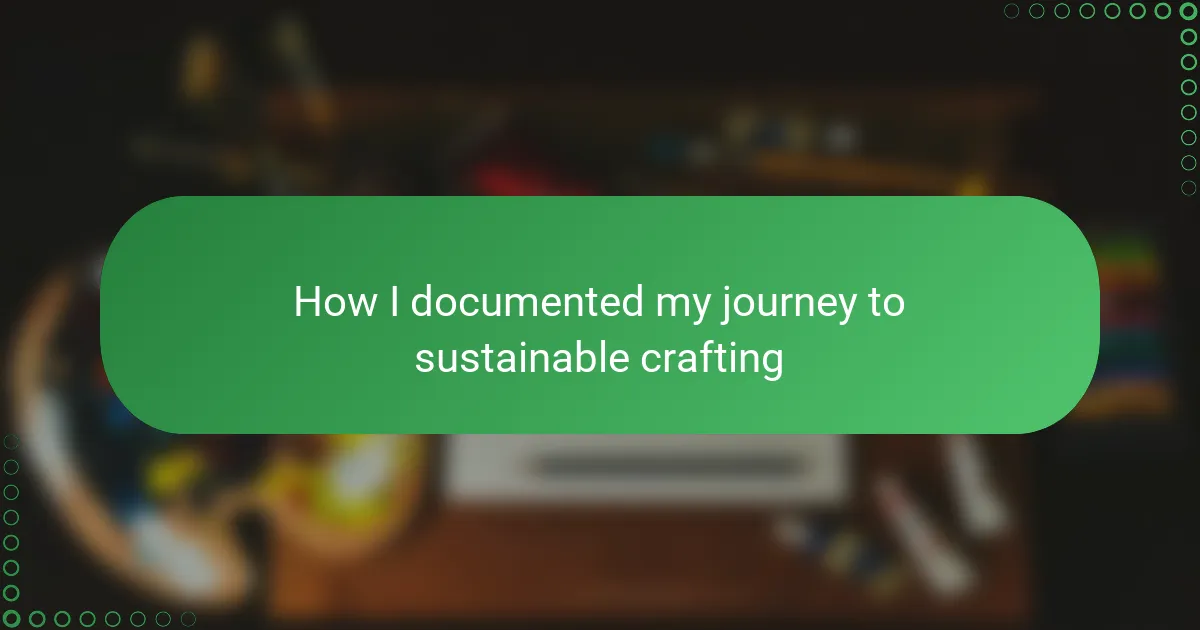Key takeaways
- Handmade paper crafts offer a unique tactile experience that connects the creator to nature and the craft process.
- Sustainable crafting focuses on using recycled materials, local sourcing, and minimizing energy consumption to honor both creativity and the environment.
- Documenting the crafting process enhances appreciation for the details and allows for reflection on both successes and challenges.
- Sharing your craft journey authentically and engaging with the community fosters connection and encourages others to explore their creativity.

Introduction to Handmade Paper Crafts
Handmade paper crafts have always fascinated me because of their unique texture and character that machine-made paper just can’t replicate. Have you ever touched a piece of paper and felt it carry a story within its fibers? That’s the magic that draws me back to this craft time and again.
When I first started working with handmade paper, I was amazed at how each sheet was a little work of art, full of imperfections that make the final product so special. It’s like capturing nature in a simple, tactile form—something personal and irreplaceable.
What makes handmade paper crafts truly rewarding is the connection you build with the materials and process. It’s more than just creating; it’s about honoring the tradition and the patience behind every fold and fiber, a practice I’ve come to cherish deeply.
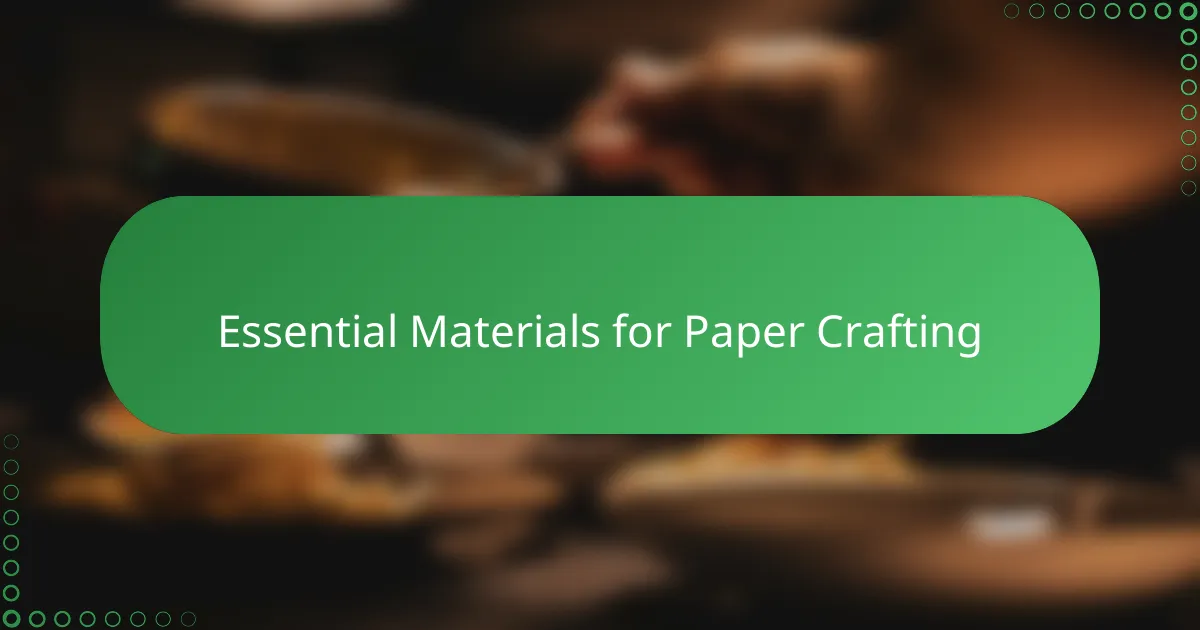
Essential Materials for Paper Crafting
When I first gathered my essential materials for paper crafting, I realized that quality paper was at the heart of the process. Handmade sheets with their rough edges and subtle variations give my projects that authentic, natural feel I love. Have you noticed how different textures inspire different creative directions? For me, selecting the right paper sparks ideas before I even start folding or cutting.
Beyond paper, I discovered that simple tools like a sharp craft knife and a sturdy cutting mat are indispensable. I remember struggling with dull blades early on—each imperfect cut reminded me how important precision is to bring my visions to life. It’s funny how such small details can transform frustration into satisfaction when everything aligns perfectly.
Of course, adhesives play a quiet but essential role. I prefer using natural glues, which connect my materials without sacrificing sustainability. It feels good knowing that every step, from sourcing to finishing, reflects my commitment to eco-friendly crafting. Have you ever felt that sense of harmony when your materials and values come together seamlessly? That’s the sweet spot I aim for in every piece.

Basic Techniques in Paper Making
One of the first techniques I learned in papermaking was pulping—breaking down fibers into a slurry that becomes the heart of each sheet. It’s fascinating how this mushy mixture, once spread thin and dried, transforms into solid paper with the slightest touch. Have you ever watched water and fiber settle together, almost like magic in slow motion?
Forming the sheet is where patience really matters. I remember those early attempts when the pulp slips through the screen or the edges come out uneven—it felt like chasing perfection in a moving target. Using a mold and deckle to shape the wet pulp taught me to balance finesse with acceptance, embracing each sheet’s unique quirks.
Pressing and drying complete the process, locking in texture and strength. I found that carefully pressing the sheets not only removes excess water but also reveals subtle details in the fibers, almost like uncovering hidden stories. Doesn’t it feel rewarding to see something handmade take shape right before your eyes, layer by delicate layer?
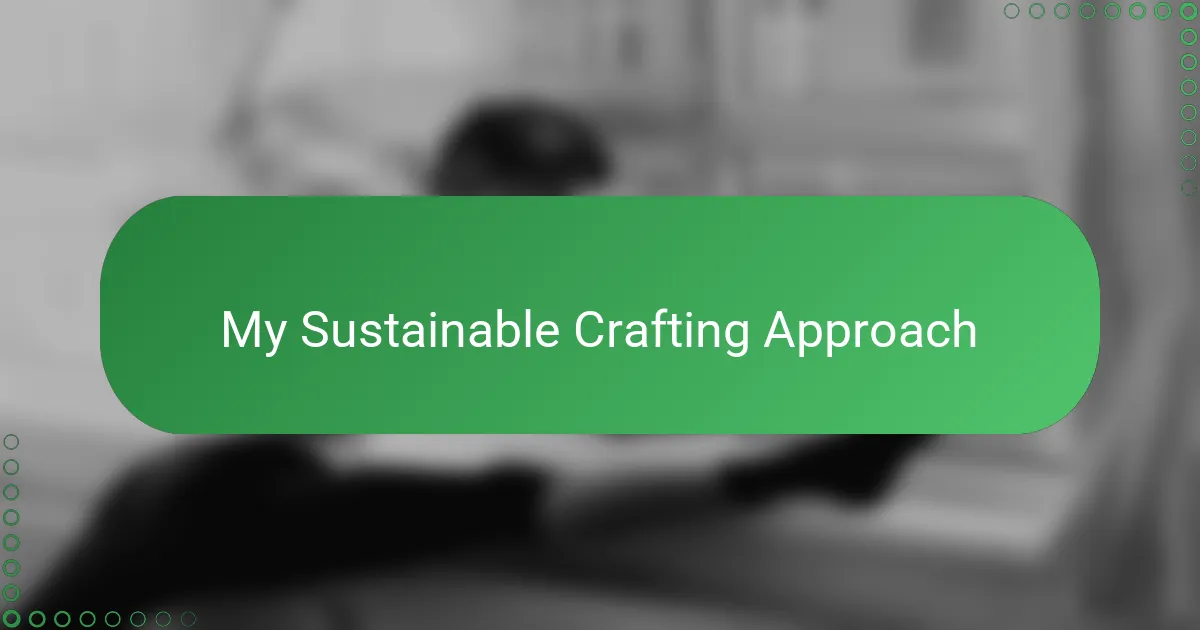
My Sustainable Crafting Approach
My sustainable crafting approach began with a simple question: how can I honor the earth while creating something beautiful? I realized that using recycled fibers and scraps not only reduced waste but added depth and character to each sheet I made. There’s a special satisfaction in knowing that discarded materials find a second life in my work.
I’ve also committed to sourcing all my ingredients locally whenever possible. It’s a small change that feels huge to me—cutting down on transportation emissions and supporting local artisans. Have you ever noticed how these connections make your craft feel more rooted and meaningful?
Lastly, I strive to minimize energy use throughout my process. Whether it’s drying paper naturally in sunlight or choosing tools that last, these choices align with my belief that sustainability is woven into every step. It turns crafting into a mindful practice, where I’m not just making art but also contributing to a better world.

Documenting the Crafting Process
Documenting the crafting process became an essential part of my journey—it’s like keeping a visual diary of every fold, tear, and texture that emerges. I started photographing each stage, curious to see how the pulp slowly turns into that delicate sheet of paper I admire so much. Have you ever noticed how capturing these moments makes you appreciate the small details that often go unnoticed?
Writing down my thoughts alongside photos helped me reflect on what worked and what didn’t. I remember one day when a batch of paper dried unevenly; jotting down those observations felt like a way to troubleshoot future attempts without frustration. It’s surprising how much clarity comes from simply pausing and recording the process.
Over time, this documentation transformed into more than just notes—it became a story of progress and learning that I could share with others. Seeing my mistakes and successes side by side reminds me that sustainable crafting is as much about patience as it is about creativity. Don’t you think that telling your own crafting story adds a deeper meaning to every piece you create?
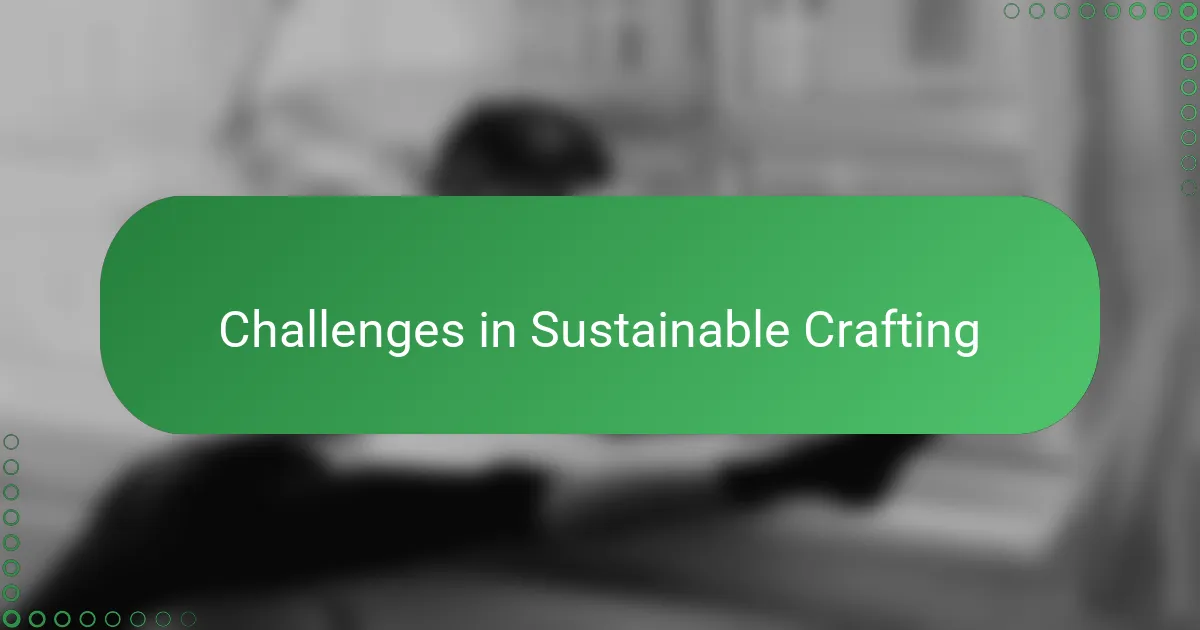
Challenges in Sustainable Crafting
Sustainable crafting isn’t without its hurdles. I remember struggling to find recycled fibers that were both eco-friendly and workable; some materials felt too fragile or inconsistent, making the paper prone to tearing. Have you ever encountered that frustration of wanting to do good but feeling limited by the options available?
Another challenge I faced was balancing quality with sustainability. There were times when using all-natural glues or local resources meant slower drying times or less vibrant colors. At first, it was tempting to compromise, but I learned that patience and experimentation could bridge that gap without sacrificing my values.
Energy consumption also caught me off guard. I used to rely on machines to speed up pressing and drying, but shifting to solar drying or manual methods demanded more time and attention. It made me realize that sustainable crafting requires not just eco-conscious materials but also a willingness to embrace slower rhythms. Have you ever noticed how slowing down can actually deepen your connection to the process?
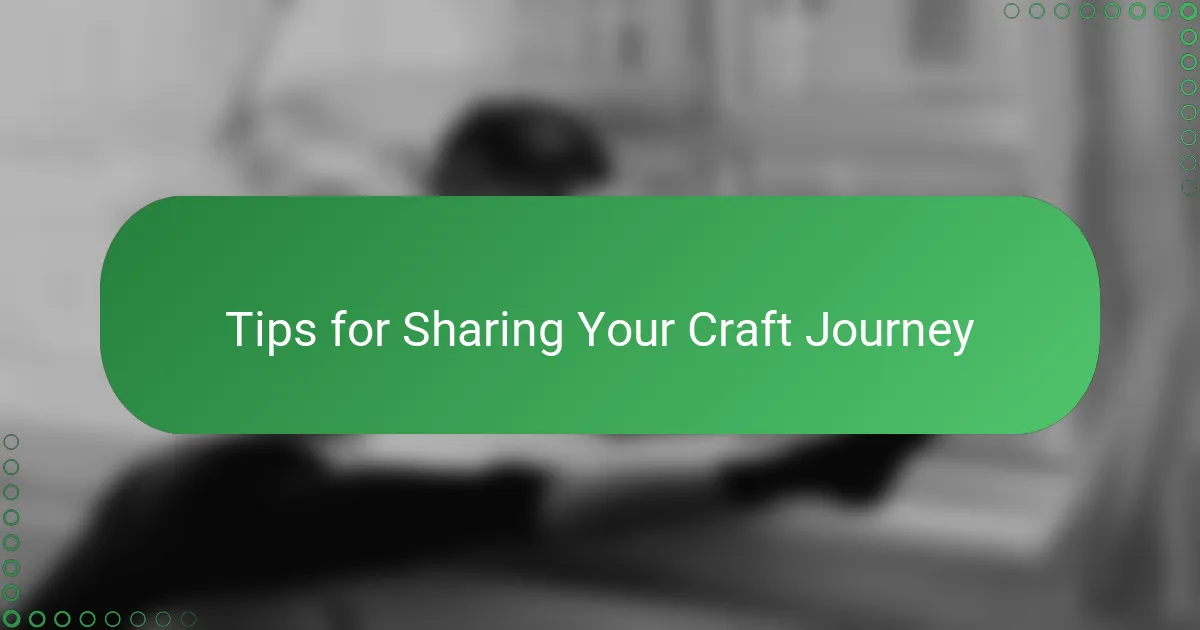
Tips for Sharing Your Craft Journey
Sharing your craft journey feels like opening a window into your world, but I found that being authentic makes all the difference. Rather than waiting for perfection, I started posting the messy, imperfect moments—those unexpected tears or ink smudges that tell the real story. Have you ever noticed how honesty invites connection and encourages others to join in their own creative adventures?
I also learned that consistency matters more than quantity. Setting a simple goal to share progress regularly, even in small snippets like photos or short notes, helped me stay engaged without feeling overwhelmed. It’s amazing how these little updates build a community, one that celebrates growth over time rather than just finished products.
Lastly, I make room to listen and respond. Crafting is personal, but sharing becomes a conversation when you invite feedback or questions. I remember a moment when a follower’s question about sourcing local fibers sparked an insightful exchange that broadened my perspective and deepened my commitment to sustainability. Have you tried turning your craft story into a dialogue rather than a monologue? It changes everything.
